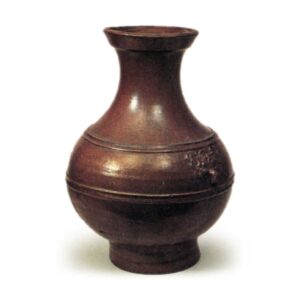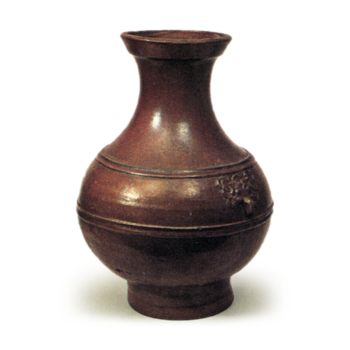
The term “brown-glazed pottery” refers to a wide range of ceramics, but when used in the history of ceramics, it usually refers to low-fired lead-glazed pottery using iron oxide as a coloring agent, which flourished in China during the Han dynasty (710-794). This term is used in contrast to green-glazed ceramics of the Han dynasty, which also flourished in China. It seems to have flourished between the Qin and Qian Han periods, earlier than green glaze, and was widespread from Zhongyuan to the Hunan region. Since there was no low-fired glaze pottery in China before this, and on the contrary, it has been used in West Asia since ancient times, it is thought that the origin of brown and green glazes in China came from the West, but this theory is doubted by some, since the glaze used in the West is a soda glaze. This glaze was used for jars and other vessels, as well as for human and animal figures on clay figurines, and seems to have been applied almost exclusively to Ming ware. This glaze method reappeared from the end of the Northern Dynasty to the beginning of the Tang Dynasty, but it seems to have been relatively short-lived.



